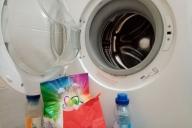When you cook meat, it's easy to cook way too much at once and not be able to eat it on time.
To make sure your meat is fresh and safe, you should store it correctly, so you can eat it later.
Here are a few tips you should know about cooked meat storage.
Cool it Down Quickly
After cooking, let the meat cool for a short time at room temperature. Then, promptly place it in the refrigerator or freezer.
Rapid cooling helps prevent bacteria from multiplying quickly.

Proper Storage Containers
Choose appropriate storage containers based on the quantity of meat. Airtight containers or vacuum-sealed bags work well.
For larger quantities, consider dividing the meat into meal-sized portions.
Wrap it Right
If you're using plastic wrap, make sure it's tightly sealed around the meat to minimize air exposure.
For a more eco-friendly option, consider beeswax wraps or reusable silicone bags.
Portion Control
Dividing large batches of cooked meat into smaller portions before storing helps maintain freshness.
This way, you only thaw or reheat what you need, reducing the risk of contamination.
Freezing Guidelines
If you're not planning to consume the cooked meat within a few days, freeze it.
Use freezer-safe bags or containers to prevent freezer burn. Label with the date and type of meat for easy identification.
Safe Fridge Temperature
Keep your refrigerator temperature at or below 40°F.
Regularly check and calibrate your fridge to ensure it stays within this safe range, preventing bacterial growth.
Avoid Cross-Contamination
Store cooked meat on the upper shelves of the fridge to prevent any juices from raw meat contaminating it.
Use separate cutting boards and utensils for raw and cooked meat.
Reheating Practices
When reheating, ensure the meat reaches an internal temperature of at least 165°F to eliminate any potential bacteria.
Stir or rotate the meat during reheating to ensure even heating.









